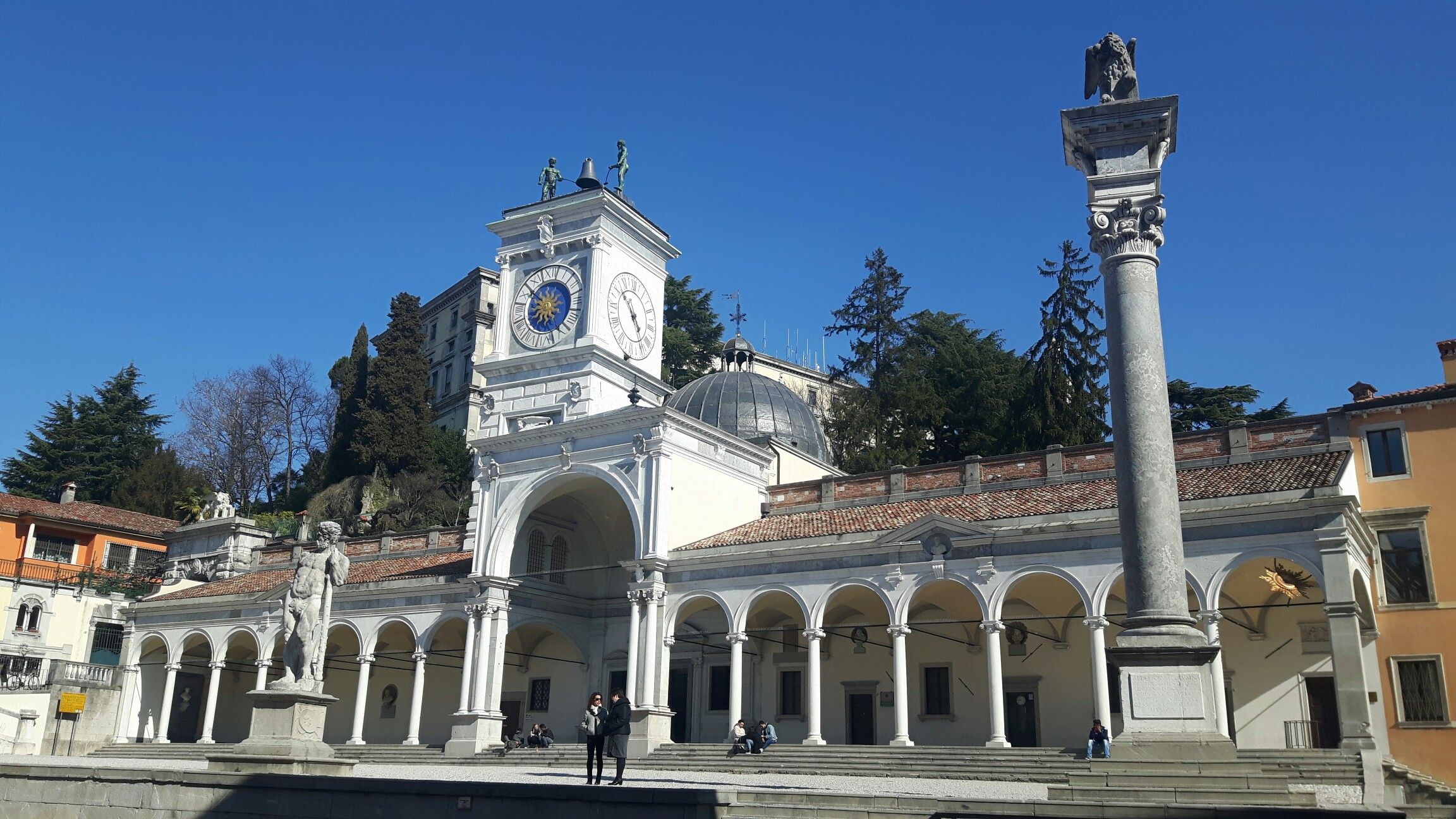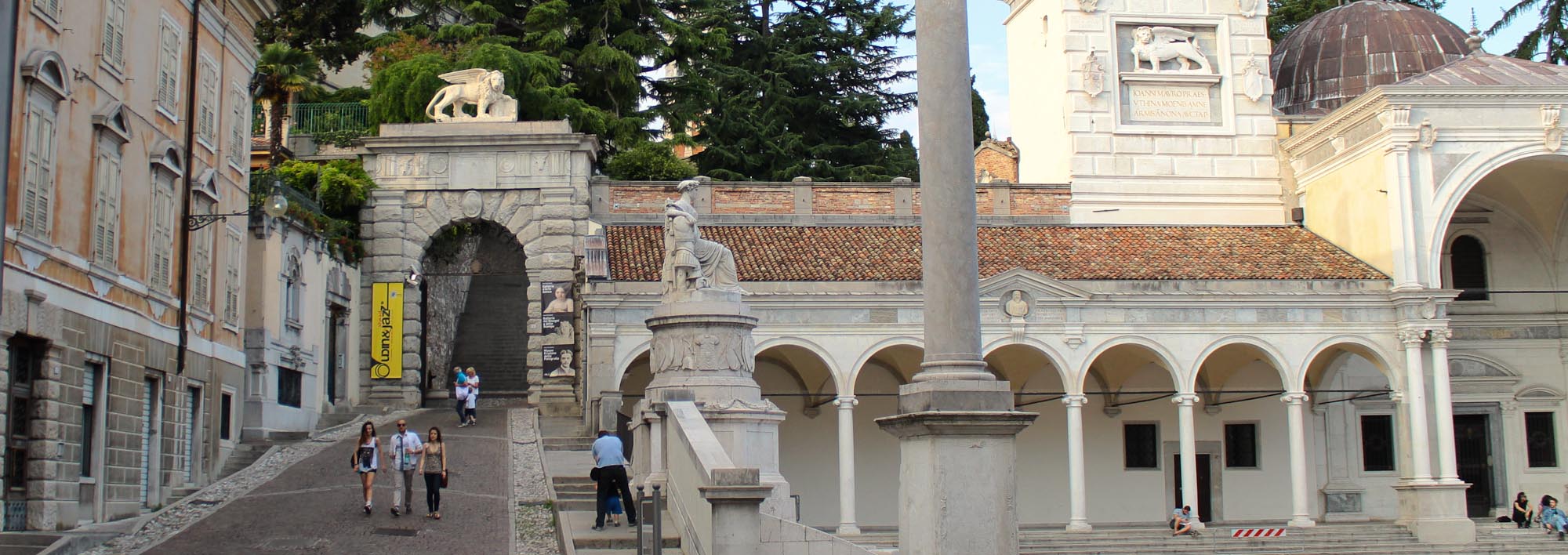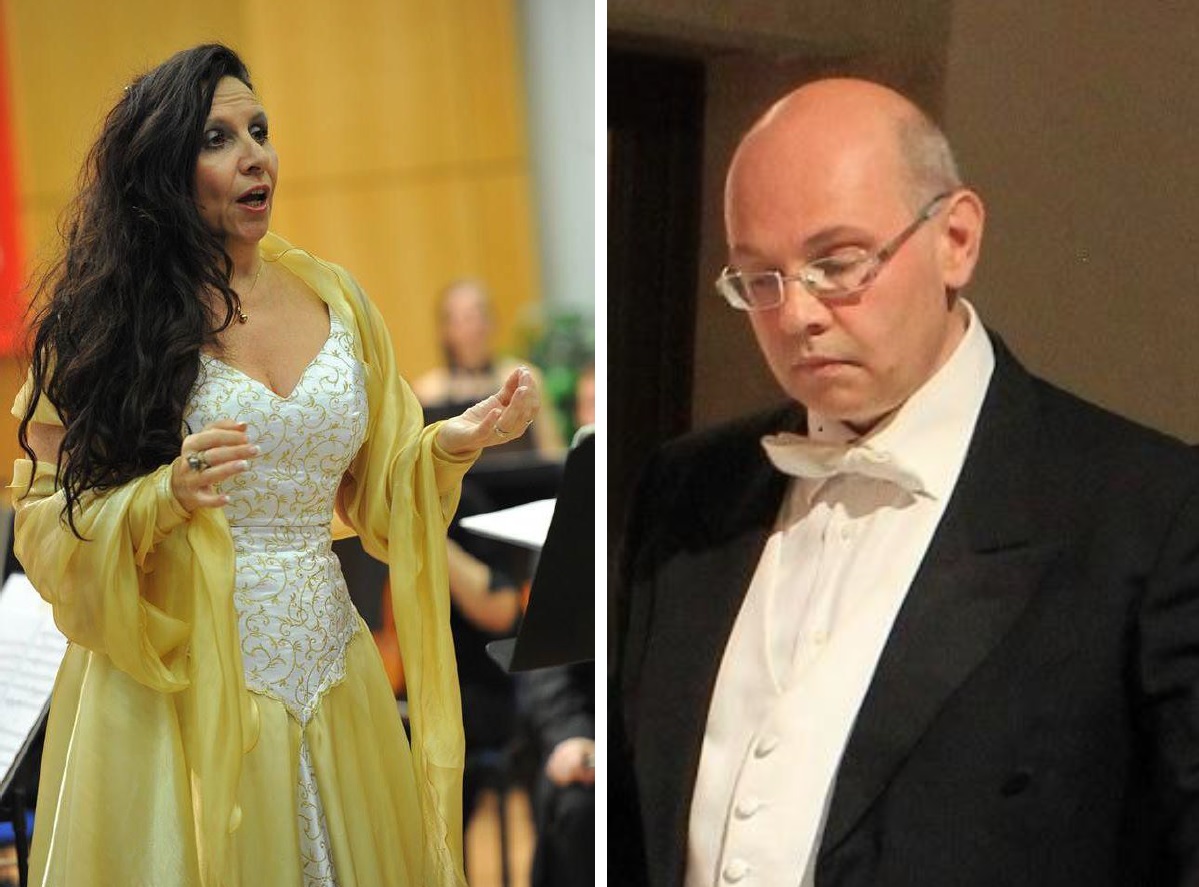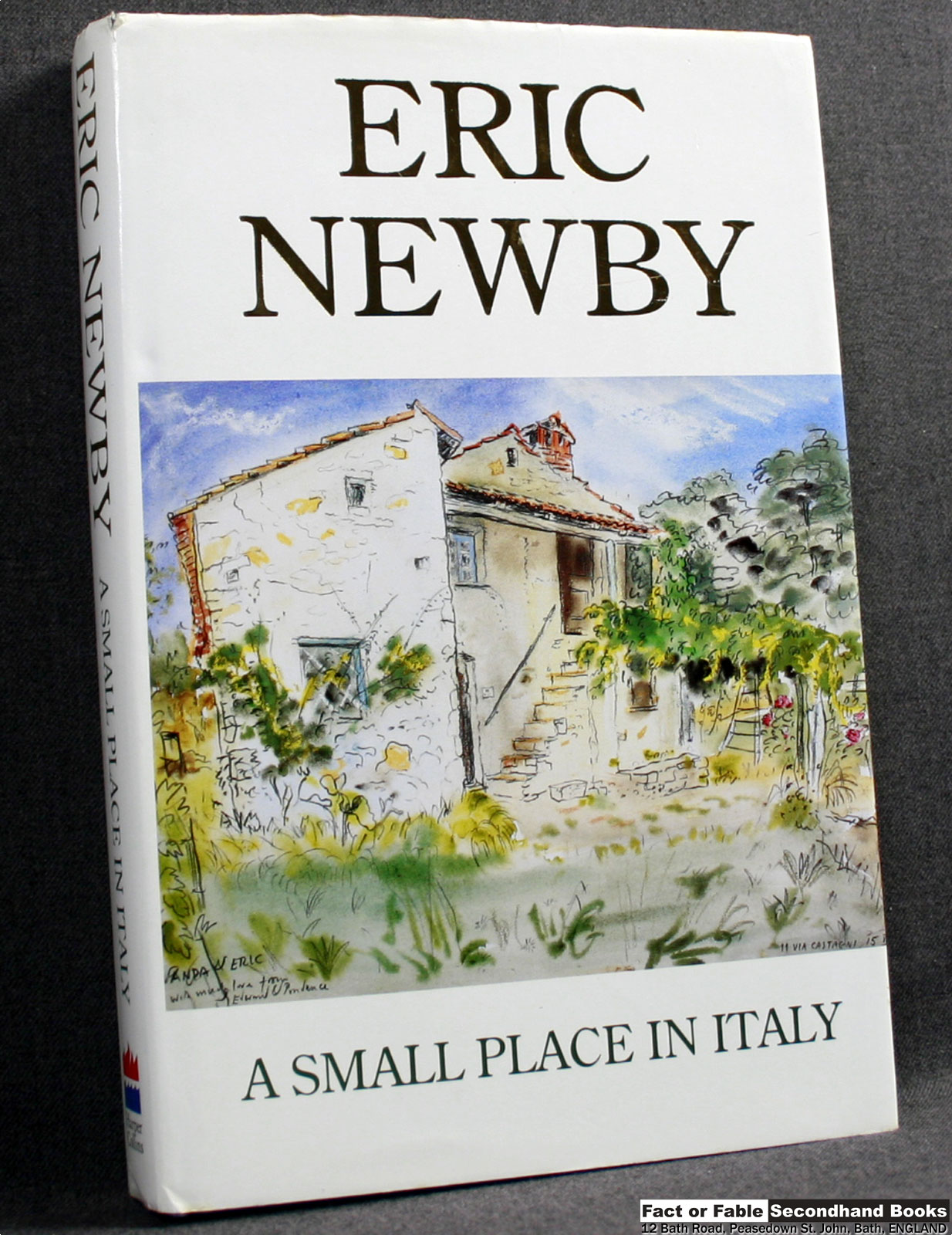Italy 2018: Wednesday, May 2: Day 16: Udine
It's a bit overcast after breakfast as we head to the Castello ... it's a pretty steep climb and there is no bus on weekdays. But the lady at the tourist office made an excellent suggestion -- we should take a cab. The ride from the our hotel takes about two minutes and only costs seven euro ... money well spent. We are a bit early so we walk around the grounds and look at the views -- both north to the mountains
and south over the city.
There is a monumental staircase in front of the Castello
but luckily there is a ground floor entrance behind the staircase.
Before we enter, I take a couple of shots of two stones with Latin inscriptions to send to our friend Maureen who "collects" them.
Inside the museum, we start with a quick look at the Risorgimento Museum, where the explanations are all in Italian ... but there are interesting displays about Garibaldi and the various stages of the effort to unify Italy in the mid-19th century.
The archaeology section is different than many museums in that features displays about the founders and donors of the collections as well as the usual holdings of Greek and Roman artifacts.
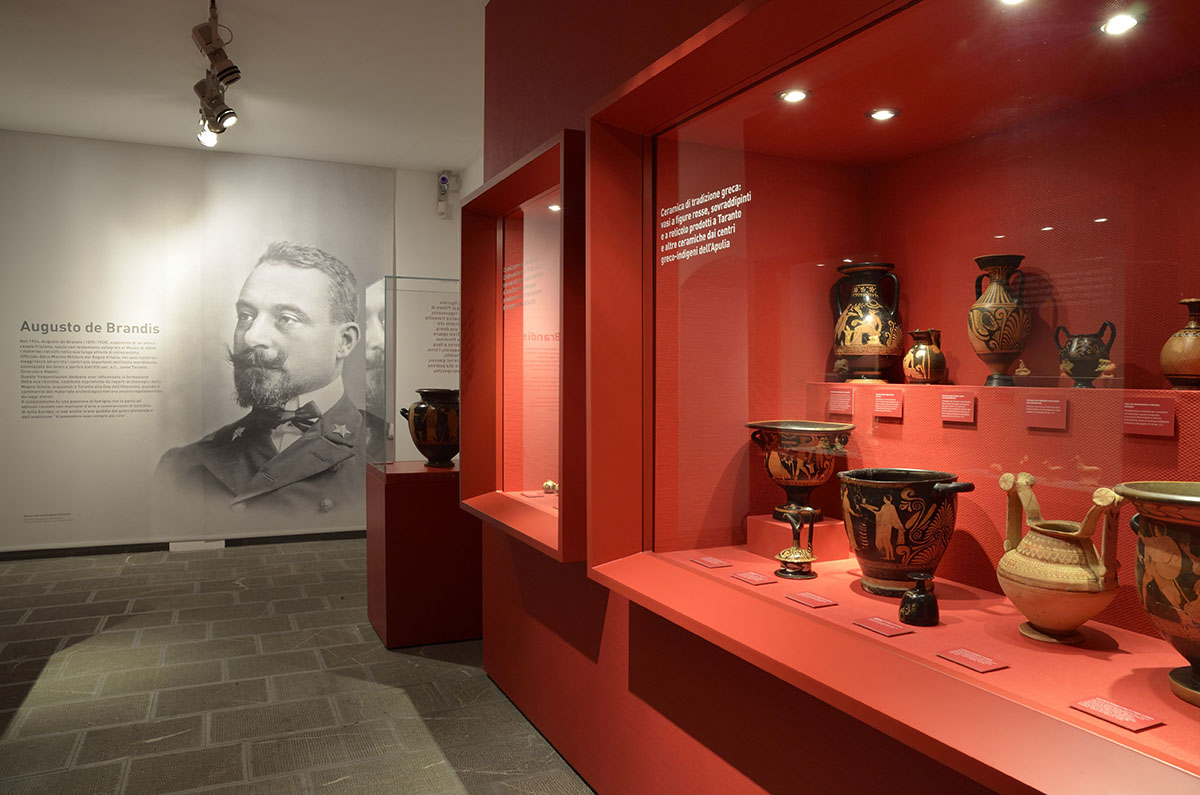
photo from the internet - www.civicimuseiudine.it
The coin collection is especially extensive and nicely displayed.
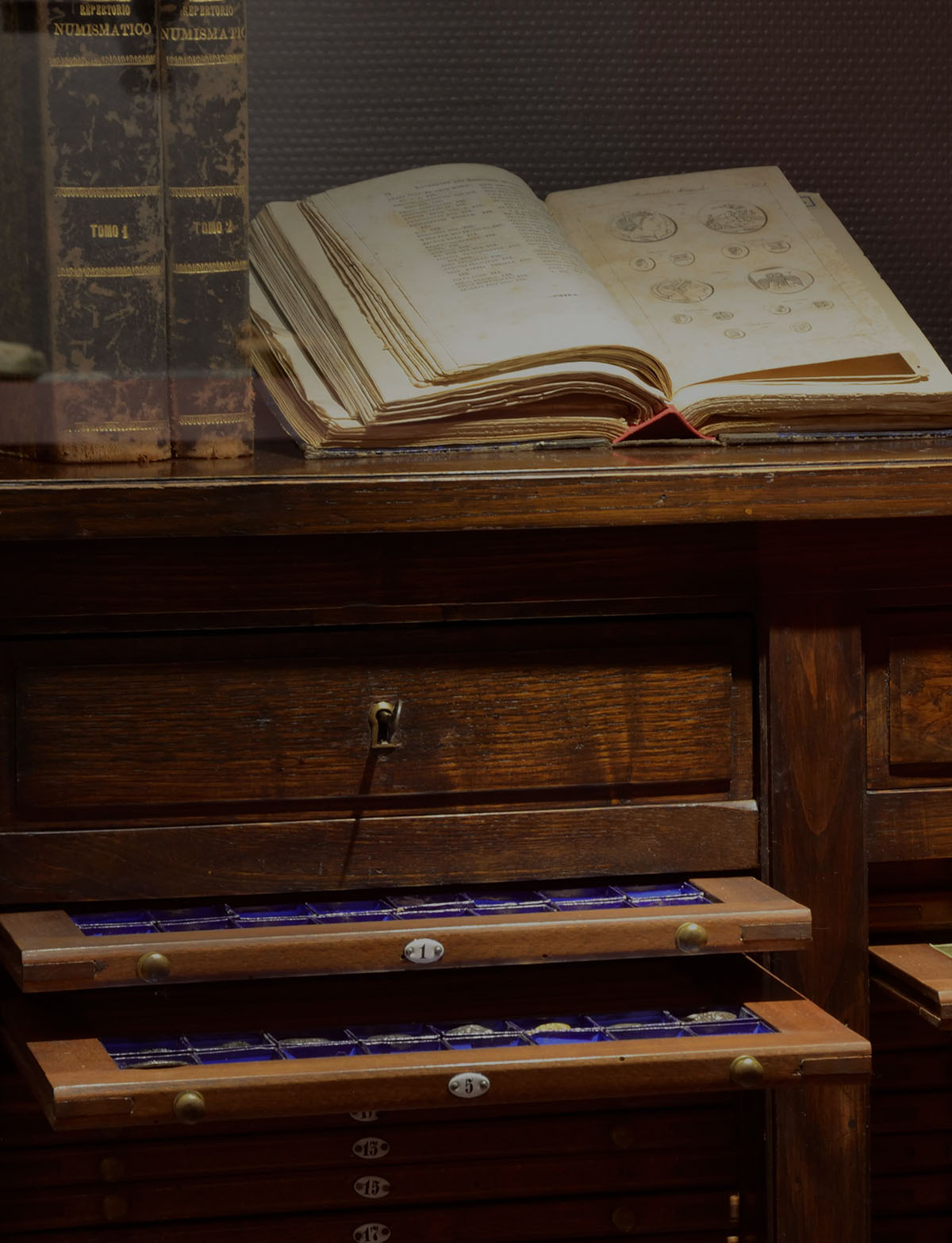
photo from the internet - www.civicimuseiudine.it
and we are very impressed with a video lecture (in Italian but with English subtitles) about the uses of death in different societies by an Italian professor named Nicola Gasparro. I wish I could find a link to it ....
The picture gallery is quite extensive and beautifully mounted. This picture is attributed to Caravaggio
and Diana really liked this portrait.
This picture is notable for the scene of Udine ... the piazza Liberta and the Castello in the background.
And I am always happy to add a Last Supper (Ultima Cena) to my collection.
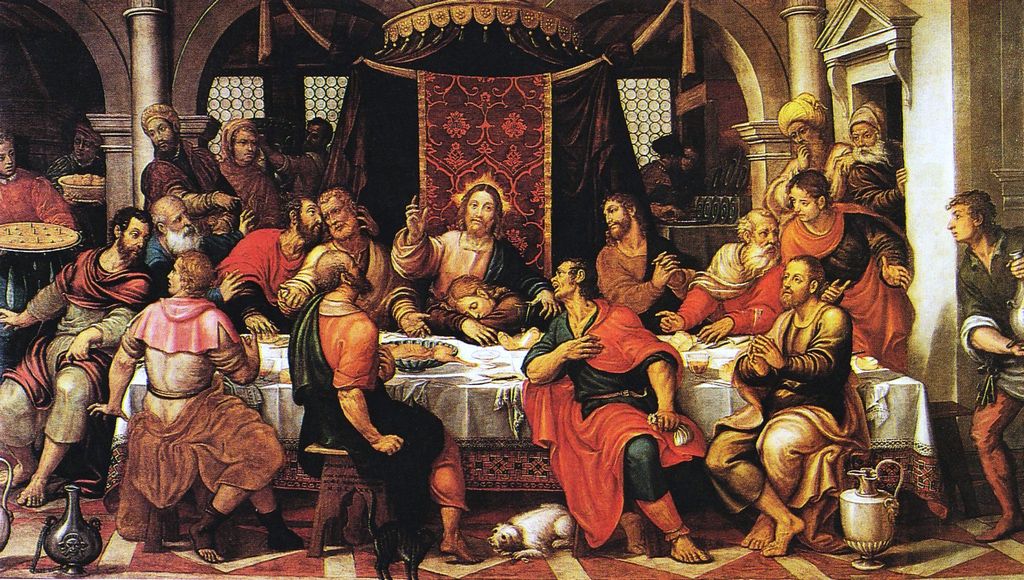
photo from the internet - i.pinimg.com
Lunch is at a very old style osteria called Pieri Mortadele where we have sandwiches on the best bread we have had on the trip so far. We wanted to buy several loaves to take with us ...
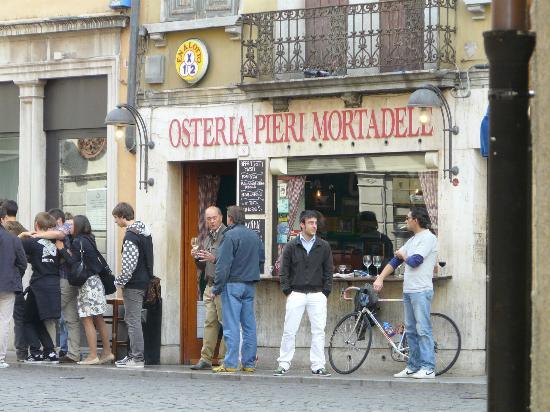
photo from the internet - media-cdn.tripadvisor.com
Laundry is next on the agenda ... we get in the car and drive to the nearby town of Cividale di Friuli, a very old Lungobard town dating back to the 6th century. We locate the laundromat and do our laundry without any problem. Another customer is there and we talk a bit ... he is a cook. We discuss where we can find the crisp version of frico that I have been looking for but he suggests that I have to go further north into the mountains where it is more common.
On the way to the laundromat, we drive through a short tunnel which is part of the Venetian Arsenal
and I notice this inscription -- in Hebrew -- on the inside wall.
We later learn that Cividale had a significant Jewish population in the middle ages and there are many other inscriptions in Hebrew in the courtyard of the Archaelogical Museum which we will have to see on our next visit.
We then do some sightseeing in town ... the terrific Archaelogical Museum with beautifully mounted displays and well written explanations in English of the Lungobard influence -- they orginally came from Scandinavia on their way to the Italian peninsula.
We then walk over to the main attraction in town ... the Tempietto Lungobard ... a small chapel from the the 8th century now part of a convent. It is well preserved with statues of saints, frescoes and intricate carvings on the walls.
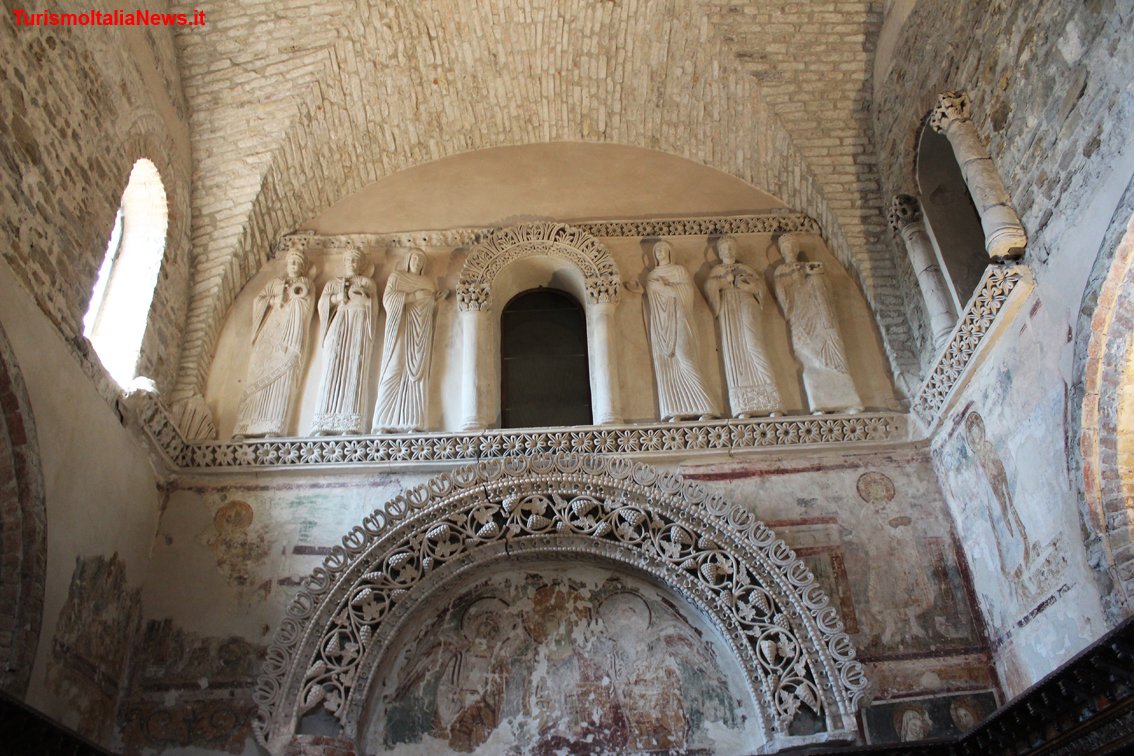
photo from the internet - www.turismoitalianews.it
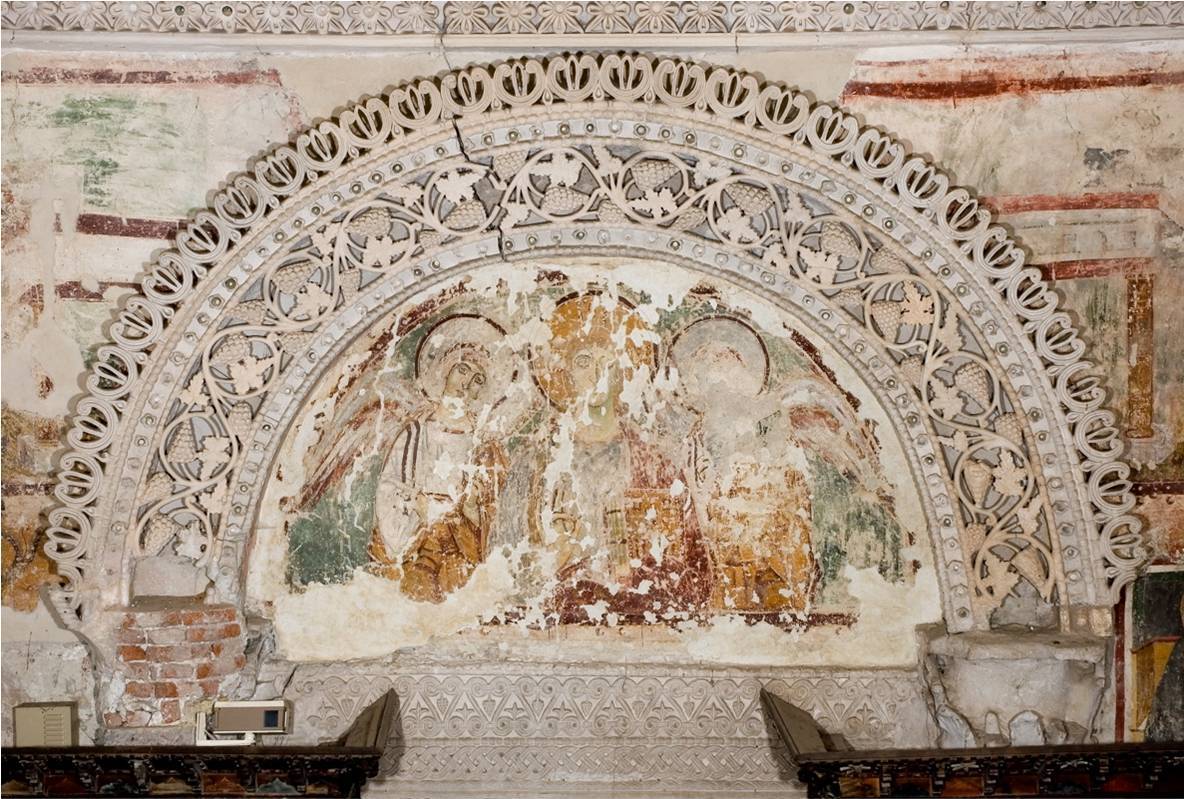
photo from the internet - www.longobardinitalia.net
On the way out, there is a walkway that gives you an idyllic panorama over the river and the town.

photo from the internet - media5.trover.com
As we leave Cividale, we pass this statue of Julius Caesar who is said to have founded the town.
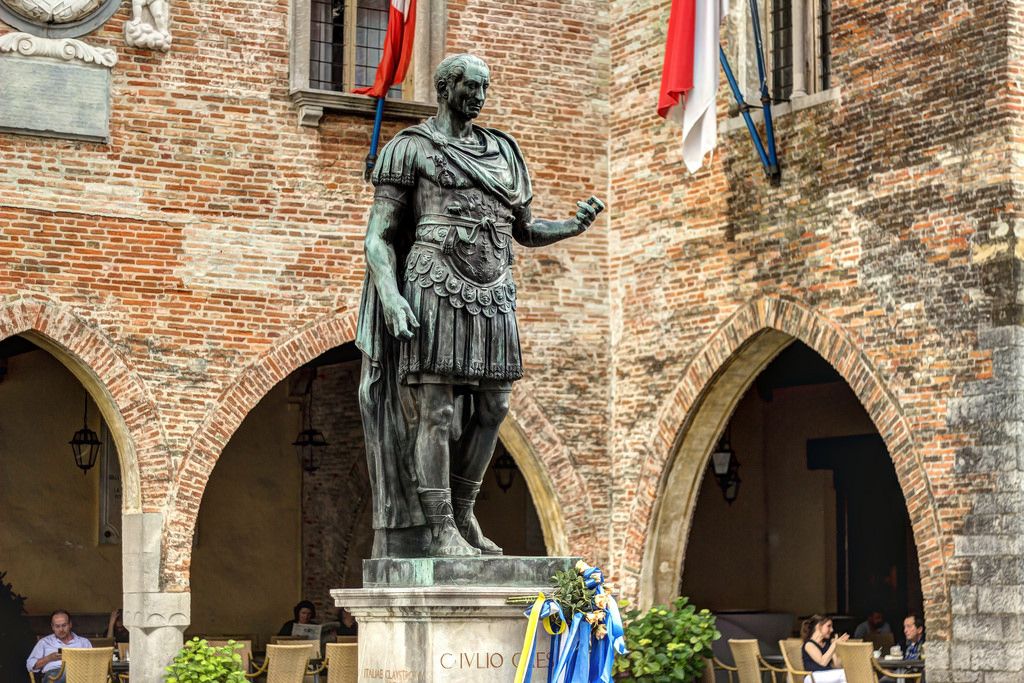
photo from the internet - i.pinimg.com
Dinner is at a very attractive restaurant literally around the corner from the hotel ... Antica Trattoria Maddalena. We are seated in a back room and ignored for about 15 minutes. We are beginning to wonder if we have become invisible in Udine restaurants. Finally a waitress appears, apologizes and takes our order. This turns out to be the best meal we have in Udine ... I finally get my frico croccante (which is still different than I remember but good). I have a big bowl of mussels in red sauce and linguine with shrimp and scallops. Diana has a cheese plate and a grilled branzino followed by a pear cake with vanilla sauce. The house white wine is easy to drink ...
Tomorrow we leave for Asolo in the foothills of the Dolomites.
Jim and Diana
It's a bit overcast after breakfast as we head to the Castello ... it's a pretty steep climb and there is no bus on weekdays. But the lady at the tourist office made an excellent suggestion -- we should take a cab. The ride from the our hotel takes about two minutes and only costs seven euro ... money well spent. We are a bit early so we walk around the grounds and look at the views -- both north to the mountains
and south over the city.
There is a monumental staircase in front of the Castello
but luckily there is a ground floor entrance behind the staircase.
Before we enter, I take a couple of shots of two stones with Latin inscriptions to send to our friend Maureen who "collects" them.
Inside the museum, we start with a quick look at the Risorgimento Museum, where the explanations are all in Italian ... but there are interesting displays about Garibaldi and the various stages of the effort to unify Italy in the mid-19th century.
The archaeology section is different than many museums in that features displays about the founders and donors of the collections as well as the usual holdings of Greek and Roman artifacts.

photo from the internet - www.civicimuseiudine.it
The coin collection is especially extensive and nicely displayed.

photo from the internet - www.civicimuseiudine.it
and we are very impressed with a video lecture (in Italian but with English subtitles) about the uses of death in different societies by an Italian professor named Nicola Gasparro. I wish I could find a link to it ....
The picture gallery is quite extensive and beautifully mounted. This picture is attributed to Caravaggio
and Diana really liked this portrait.
This picture is notable for the scene of Udine ... the piazza Liberta and the Castello in the background.
And I am always happy to add a Last Supper (Ultima Cena) to my collection.

photo from the internet - i.pinimg.com
Lunch is at a very old style osteria called Pieri Mortadele where we have sandwiches on the best bread we have had on the trip so far. We wanted to buy several loaves to take with us ...

photo from the internet - media-cdn.tripadvisor.com
Laundry is next on the agenda ... we get in the car and drive to the nearby town of Cividale di Friuli, a very old Lungobard town dating back to the 6th century. We locate the laundromat and do our laundry without any problem. Another customer is there and we talk a bit ... he is a cook. We discuss where we can find the crisp version of frico that I have been looking for but he suggests that I have to go further north into the mountains where it is more common.
On the way to the laundromat, we drive through a short tunnel which is part of the Venetian Arsenal
and I notice this inscription -- in Hebrew -- on the inside wall.
We later learn that Cividale had a significant Jewish population in the middle ages and there are many other inscriptions in Hebrew in the courtyard of the Archaelogical Museum which we will have to see on our next visit.
We then do some sightseeing in town ... the terrific Archaelogical Museum with beautifully mounted displays and well written explanations in English of the Lungobard influence -- they orginally came from Scandinavia on their way to the Italian peninsula.
We then walk over to the main attraction in town ... the Tempietto Lungobard ... a small chapel from the the 8th century now part of a convent. It is well preserved with statues of saints, frescoes and intricate carvings on the walls.

photo from the internet - www.turismoitalianews.it

photo from the internet - www.longobardinitalia.net
On the way out, there is a walkway that gives you an idyllic panorama over the river and the town.

photo from the internet - media5.trover.com
As we leave Cividale, we pass this statue of Julius Caesar who is said to have founded the town.

photo from the internet - i.pinimg.com
Dinner is at a very attractive restaurant literally around the corner from the hotel ... Antica Trattoria Maddalena. We are seated in a back room and ignored for about 15 minutes. We are beginning to wonder if we have become invisible in Udine restaurants. Finally a waitress appears, apologizes and takes our order. This turns out to be the best meal we have in Udine ... I finally get my frico croccante (which is still different than I remember but good). I have a big bowl of mussels in red sauce and linguine with shrimp and scallops. Diana has a cheese plate and a grilled branzino followed by a pear cake with vanilla sauce. The house white wine is easy to drink ...
Tomorrow we leave for Asolo in the foothills of the Dolomites.
Jim and Diana



















